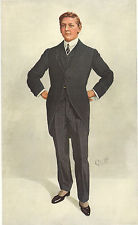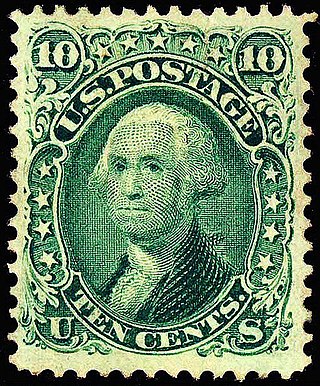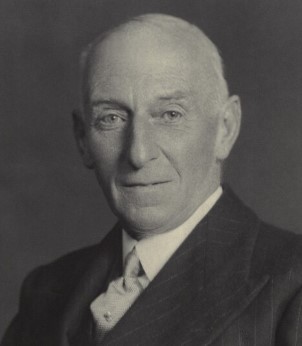
John Augustus Charles Harrison (born Manchester, 5 August 1872; died Wimbledon, 25 January 1955) was a noted British stamp engraver whose work included the British Seahorse stamps of 1913. [1]

John Augustus Charles Harrison (born Manchester, 5 August 1872; died Wimbledon, 25 January 1955) was a noted British stamp engraver whose work included the British Seahorse stamps of 1913. [1]
John Augustus Charles Harrison was the son of line-engraver, Samuel Harrison, and the grandson of John Harrison, a heraldic painter. Two of John’s three brothers, Thomas and Wilfred, were also engravers.
John A.C. Harrison was apprenticed to his father at the age of thirteen, while he attended art classes in Birmingham. Aged seventeen, Harrison joined the firm of Waterlow Brothers and Layton as an ornamental engraver. By the end of the century, however, Harrison had left their employment and was working as a self-employed engraver. He specialised in the design and production of line-engraved heraldic bookplates, which gained him a wide reputation for his skills, many of which were produced for the firm of J. & E. Bumpus of Oxford Street in London. [2] Alongside his career as an engraver, Harrison was also a competent water-colourist and was interested in the stage: he was for many years a member of the Comedy Club of Streatham. [3]
Harrison was commissioned by the Royal Mint to engrave the dies of several postage stamps, upon the death of King Edward VII in 1910. He became known for his mastery of both relief-engraving and line-engraving, which was only matched by Ferdinand Schirnbock (1859-1930). [4]
In 1963 Harrison's son donated a collection of mostly British and British Commonwealth die proofs engraved by J.A.C. Harrison between 1911 and 1937 to the British Museum and it today forms part of the British Library Philatelic Collections. [1]
Messrs. Perkins, Bacon & Co was a printer of books, bank notes and postage stamps, most notable for printing the Penny Black, the world's first adhesive postage stamps, in 1840.
This is a list of philatelic topics.

Postage stamps and postal history of Great Britain surveys postal history from the United Kingdom and the postage stamps issued by that country and its various historical territories until the present day.

The postage stamps and postal system of the Confederate States of America carried the mail of the Confederacy for a brief period in U.S. history. Early in 1861 when South Carolina no longer considered itself part of the Union and demanded that the U.S. Army abandon Fort Sumter, plans for a Confederate postal system were already underway. Indeed, the Confederate Post Office was established on February 21, 1861; and it was not until April 12 that the American Civil War officially began, when the Confederate Army fired upon U.S. soldiers who had refused to abandon the fort. However, the United States Post Office Department continued to handle the mail of the seceded states as usual during the first weeks of the war. It was not until June 1 that the Confederate Post Office took over collection and delivery, now faced with the task of providing postage stamps and mail services for its citizens.
An Ex Libris from ex librīs, also known as a bookplate, is a printed or decorative label pasted into a book, often on the front endpaper, to indicate ownership. Simple typographical bookplates are termed "book labels".

John Harry Robson Lowe was an English professional philatelist, stamp dealer and stamp auctioneer.
Alan Reynolds Stone, CBE, RDI was an English wood engraver, engraver, designer, typographer and painter.

Sir Edward Denny Bacon was a British philatelist who helped with the enlargement and mounting of collections possessed by rich collectors of his time and became the curator of the Royal Philatelic Collection between 1913 and 1938.
Admirals are a series of definitive stamps issued by three countries of the British Commonwealth that show King George V of Great Britain and the British Dominions. The stamps are referred to as the Admirals because King George is depicted in his Admiral of the Fleet uniform. The stamps were issued by Canada in 1911–1928, New Zealand in 1926, and Rhodesia in 1913–24.

Charles Nissen was a British philatelist, and stamp dealer who discovered the famous stock exchange forgery and wrote, with Bertram McGowan, the definitive book on the plating of the Penny Black.
John Easton was a printer and philatelic author who signed the Roll of Distinguished Philatelists in 1960.

Frederick William Whisstock was an English artist, cartoonist, and well known illustrator for the W. Britain Toy Company.

Presidents of the United States have frequently appeared on U.S. postage stamps since the mid-19th century. The United States Post Office Department released its first two postage stamps in 1847, featuring George Washington on one, and Benjamin Franklin on the other. The advent of presidents on postage stamps has been definitive to U.S. postage stamp design since the first issues were released and set the precedent that U.S. stamp designs would follow for many generations.

Henry John Fanshawe Badeley, 1st Baron Badeley, KCB, CBE, known as Sir Henry Badeley between 1935 and 1949, was a British civil servant and engraver. He was Clerk of the Parliaments from 1934 to 1949.

The British Library Philatelic Collections is the national philatelic collection of the United Kingdom with over 8 million items from around the world. It was established in 1891 as part of the British Museum Library, later to become the British Library, with the collection of Thomas Tapling. In addition to bequests and continuing donations, the library received consistent deposits by the Crown Agency and has become a primary research collection for British Empire and international history. The collections contain a wide range of artefacts in addition to postage stamps, from newspaper stamps to a press used to print the first British postage stamps.

The Mosely Collection of British Africa stamps dating to 1935 was formed by Dr Edward Mosely of Johannesburg, South Africa. The collection was donated to the British Museum by his daughter, Kathleen Cunningham, in 1946 and is now held as part of the British Library Philatelic Collections. After the Tapling Collection, this is considered the Library's most important philatelic acquisition due to the number of countries represented and the number of unique items included.

The Regular Issues of 1922–1931 were a series of 27 U.S. postage stamps issued for general everyday use by the U.S. Post Office. Unlike the definitives previously in use, which presented only a Washington or Franklin image, each of these definitive stamps depicted a different president or other subject, with Washington and Franklin each confined to a single denomination. The series not only restored the historical tradition of honoring multiple presidents on U.S. Postage but extended it. Offering the customary presidential portraits of the martyred Lincoln and Garfield, the war hero Grant, and the founding fathers Washington and Jefferson, the series also memorialized some of the more recently deceased presidents, beginning with Hayes, McKinley, Cleveland and Roosevelt. Later, the deaths of Harding, Wilson and Taft all prompted additions to the presidential roster of Regular Issue stamps, and Benjamin Harrison's demise (1901) was belatedly deemed recent enough to be acknowledged as well, even though it had already been recognized in the Series of 1902. The Regular Issues also included other notable Americans, such as Martha Washington and Nathan Hale—and, moreover, was the first definitive series since 1869 to offer iconic American pictorial images: these included the Statue of Liberty, the Capitol Building and others. The first time (1869) that images other than portraits of statesmen had been featured on U.S. postage, the general public disapproved, complaining that the scenes were no substitute for images of presidents and Franklin. However, with the release of these 1922 regular issues, the various scenes—which included the Statue of Liberty, the Lincoln Memorial and even an engraving of an American Buffalo—prompted no objections. To be sure, this series presented pictorial images only on the higher-value stamps; the more commonly used denominations, of 12 cents and lower, still offered the traditional portraits.
Henri-Lucien Cheffer was a French painter, engraver and illustrator. Cheffer was chiefly known for his postage stamp designs, the first of which he designed in 1911. He also designed bank notes for French Algeria, Tunisia, the Netherlands and the Dutch East Indies.

Charles William Sherborn, was an English engraver, who chiefly made bookplates. He has been hailed as having led the revival in copper-engraved bookplates, and came to be called the "Victorian little master".

Leonard Douglas Fryer was a British artist and designer. The son of a steel engraver, he worked for the printers Waterlow and Sons, preparing proposed designs for material to be produced by the firm such as stamps and banknotes. In 2019, a collection of his watercolour paintings for stamp and banknote designs was sold at auction after being found in a wardrobe 40 years after his death.